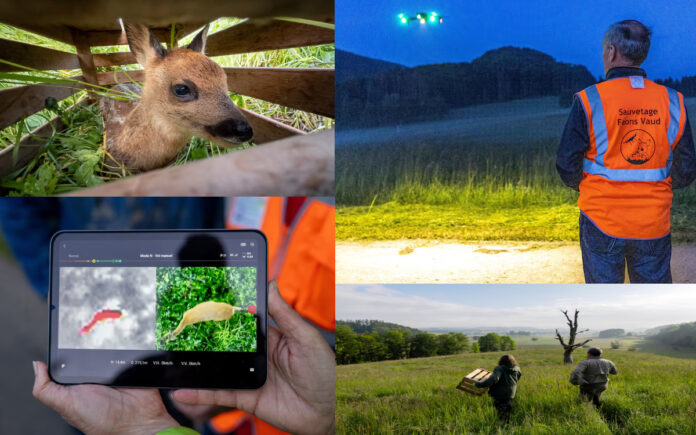Forel: In the picturesque landscapes of the Swiss town of Forel, a heartwarming initiative unfolds each dawn as volunteers deploy drones to locate fawns nestled amidst the tall grass. This proactive measure aims to protect these young deer from the perils of heavy agricultural machinery, ensuring their safety in the verdant fields.
The urgency behind this effort stems from the distressing reality of hundreds of fawns meeting untimely deaths or suffering mutilations in Swiss agricultural settings. Responding to this crisis, Fondation Sauvetage Faons (the Fawn Rescue Foundation) in the Vaud canton has taken decisive action to mitigate these unfortunate incidents.
For farmer Stephan Kohl, the devastation of inadvertently causing harm to a fawn in his field was a pivotal moment. Since then, he has availed himself of the foundation’s invaluable service to prevent further tragedies. Reflecting on the significance of safeguarding these delicate creatures, Kohl remarks, “A little fawn is so small. We all have small cats and dogs at home. Fawns are cute, too. They are wild animals, but animals nonetheless.”
Established in 2018, the foundation plays a crucial role in alerting farmers to the presence of fawns, enabling them to navigate their agricultural activities without endangering these vulnerable creatures. Roger Stettler, a former banker turned volunteer, elucidates the mission succinctly, stating, “When the machinery comes through, the fawn gets hit and is killed. Our goal is to find them and make them safe, so they don’t get crushed.”
Also Read | Apple Intelligence: A Potential Boost for iPhone Sales Amidst Consumer Upgrade Interest
The behavior of does, which often leave fawns in fields while foraging for sustenance, underscores the necessity of this intervention. Unlike adult deer or foxes that flee in response to noise, fawns remain motionless, rendering them susceptible to harm by farm machinery.
At the behest of farmers, volunteers deploy drones equipped with thermal imaging technology to conduct aerial surveys of their fields. This early-morning reconnaissance allows them to identify fawns, which appear as distinctive red blotches on the drone’s camera, before the sun intensifies the heat and conceals them.
Once located, the young animals are carefully shielded with wooden crates adorned with flags, serving as conspicuous markers for farmers to avoid during their agricultural operations.



